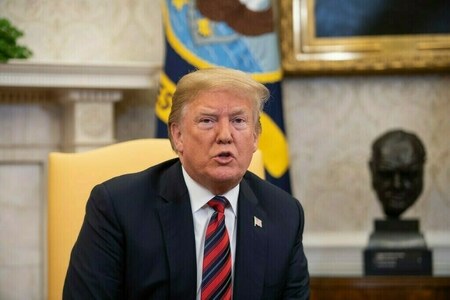Global Policymakers Express Relief Over US Economic Stance
As global economic leaders convened in Washington this week, a sense of relief permeated the meetings. Despite the previous administration’s inclination towards a more isolated economic strategy, the established US-centric global economic structure, which has been in place for eight decades, appears stable for the time being.
The Spring Meetings of both the International Monetary Fund and the World Bank were largely focused on discussions regarding international commerce. These discussions also yielded some conciliatory remarks from Washington concerning its relationship with China.
However, deeper concerns lingered among central bankers and finance ministers, particularly in light of the prior administration’s critiques of international bodies and the Federal Reserve. Key questions arose: Can the US dollar still be considered a reliable global safe haven, and can the two financial institutions that have underpinned the global economic system since World War II continue to be depended upon?
Interactions with numerous global policymakers revealed widespread relief that the prior administration had softened its threats against the Federal Reserve Chair, whom it had previously labeled critically. The Fed Chair is seen as a protector of the dollar’s international value.
Furthermore, some viewed the call from the Treasury Secretary to reshape the IMF and World Bank in accordance with the previous administration’s priorities as a positive sign. This was interpreted as an indication that the United States was not planning to withdraw from these two critical lenders, which it was instrumental in establishing at the Bretton Woods conference in 1944. Robert Holzmann, Austria’s central bank governor, stated that the week instilled “cautious relief,” noting a shift in the US administration’s approach, but also expressing reservations about its lasting nature.
For many officials, the idea of politicizing the Federal Reserve, or significantly diminishing the role of the IMF and World Bank, is deeply troubling.
Without a reliable lender of last resort, approximately $25 trillion in bonds and loans issued internationally could be jeopardized.
A central concern for policymakers is the absence of a viable substitute for the United States as the dominant global financial power—a situation known among economists as the Kindleberger Trap, named after the noted historian Charles Kindleberger.
While the euro is gaining traction as a secondary reserve currency, boosted by the European Union’s perceived stability, policymakers emphasized that it is not yet positioned to supplant the dollar. At best, it might slightly increase its current 20% share of global reserves.
Among the 20 nations using the euro, only Germany possesses the credit rating and economic scale that investors expect from a safe-haven currency.
Other member states face high levels of debt and are susceptible to episodes of political and financial instability, as seen recently in France. This raises ongoing concerns about the long-term stability of the Eurozone.
Furthermore, the Eurozone’s geographical proximity to Russia, especially the Baltic states that were once part of the Soviet Union, adds to these concerns.
With Japan’s economy now relatively small and China’s currency under tight control, there remains no clear alternative to the dollar-based system supported by the Federal Reserve and the Bretton Woods institutions.



Comments (0)
No comments yet. Be the first to comment!
Leave a Comment